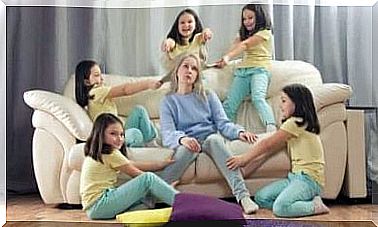Home Strategies For Children With Learning Disabilities – Being Parents

Imagine you are sitting at the living room table helping your child with homework. You do everything you can to keep him focused, but the very act of sharpening his pencil makes him lose his concentration. Your child has learning problems and you need to take this into account.
We are therefore going to present you some strategies to apply at home, which adapt to its real capacities. You may think that doing homework with children with learning disabilities is quite complicated, but in reality there is no reason for it to be so if you apply these strategies at home.
Home Strategies for Children with Learning Problems

Team efforts
Contact your child’s teacher to talk about your child’s homework habits. Talk to him about the time he spends doing them and his tendency to get distracted when he has to do his job. You will also need to find out what the teacher’s expectations are regarding your child’s learning and intellectual development.
It will also be essential that you set up a homework schedule to help the little one solve the problems they are facing at home. Make him understand that even though it is a team effort and that you and the teacher are there to help him, he must do his best to move forward in his own learning.
A distracting five-minute break
If your child is frustrated with exercise, it is best to take a break and do something fun together. You can take five minutes to go out for a walk, listen to a fun song, or have a snack. This can help the child to dissipate his frustration and return to his homework with a better disposition.
He will be able to resume his exercises with better energy and wanting to do better. If he sits frustrated and sitting around doing the same thing for too long and still doesn’t get it done, don’t give him the answer but don’t let him get stuck on an emotional level either. A distracting break is very important.
Homework completion table
Create a homework completion chart together and stick it in the fridge or anywhere else for your child to easily see. Do it yourself or search the internet for a template to download and print.
Put an “X” every time your child completes an assignment. You can also reward the child with a small prize when he completes the picture. Most importantly, you recognize your child’s success, no matter how small, in whatever way you see fit.
Sharing reading, one of the strategies to adopt at home for children with learning problems
Reading an entire chapter of a book can be overwhelming for some children with learning disabilities. So that he does not stress too much and does not feel too suffocated by this reading, it is necessary that you help him. You need to help her enjoy reading and you need to make her understand how important it is.

You can do this by asking your child to read the first paragraph or the first sentence. If he is just starting to read, read much of the text to him. Then ask him to continue with another small part.
In this way, the information in the story will be more interesting. It is necessary to take breaks so that the concepts presented stay well in mind. This will help your child to be interested in the homework he has to do.
Put on soft music
Putting on soft music while the kids are doing their homework is not a negative thing, even if your child has difficulty learning and has trouble concentrating. If you choose the right music, it won’t be a distraction at all, far from it.
However, the song must be melodic and not have lyrics that the child can understand.
The melody will help him with his homework in a more pleasant and light way and he will enjoy the music. If you know how to play an instrument, playing it softly while doing his homework can help mask annoying noises. He can also put earplugs if the music bothers other family members.
Ultimately, we hope these home strategies for children with learning disabilities will help you provide the best study options for your little ones.









